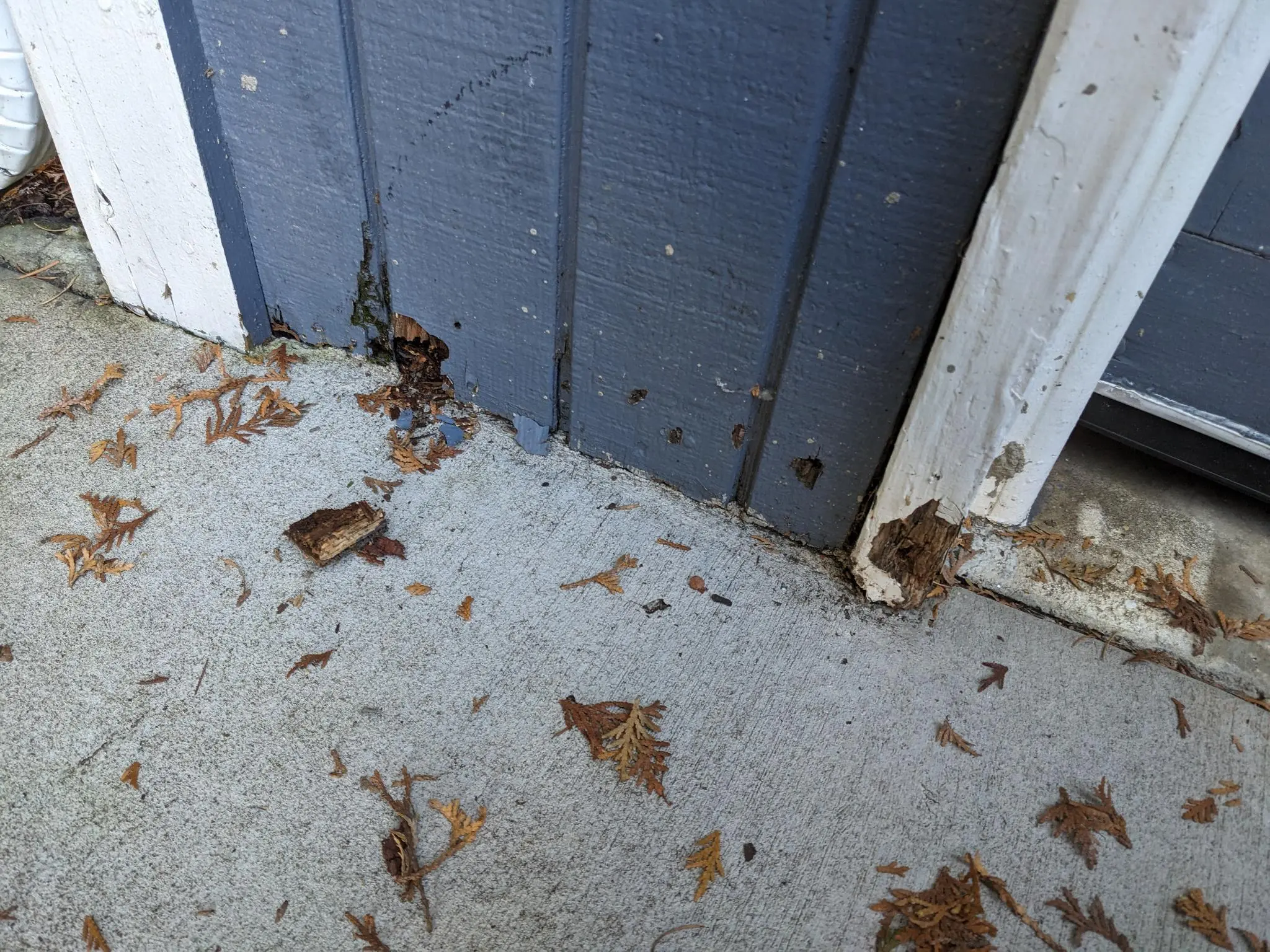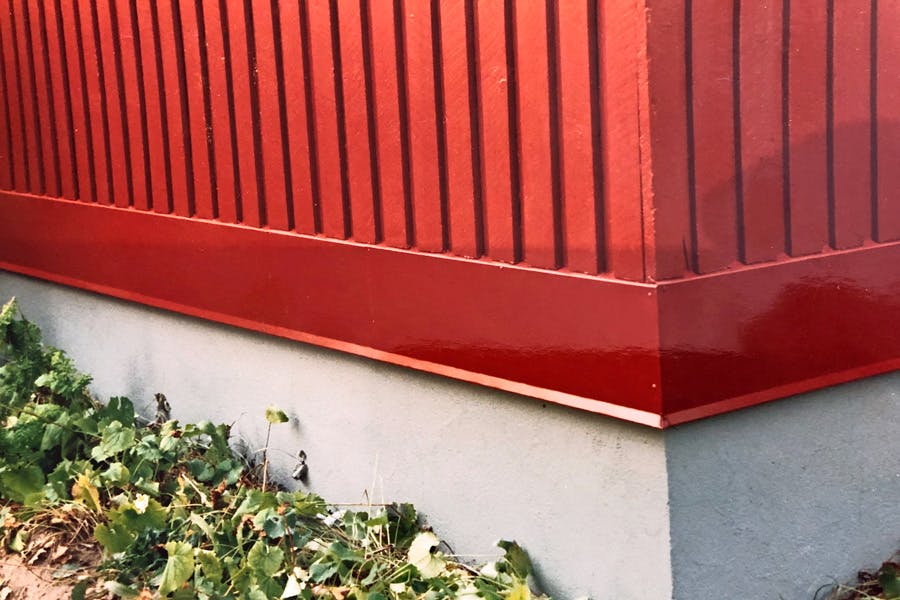Once it's rotted, you need to replace. This will also give you the opportunity to look at the wood behind the siding as there's a good chance that the rot goes deeper.
You never want to have untreated wood touching concrete. Concrete will always wick water and rot the wood. When you replace the siding, leave a 3/8in gap between the wood and concrete. Seal the gap with caulk to keep water out.

